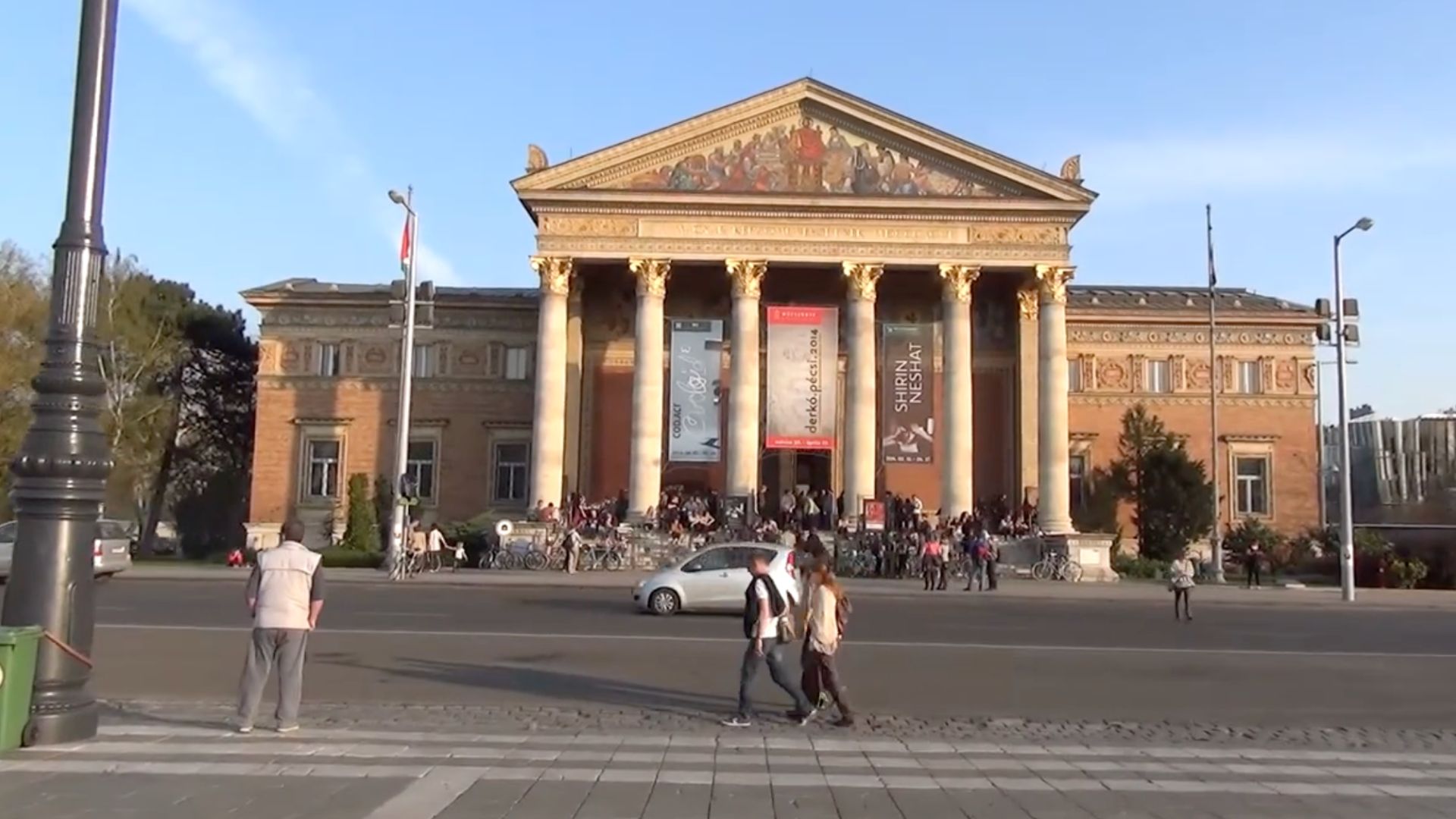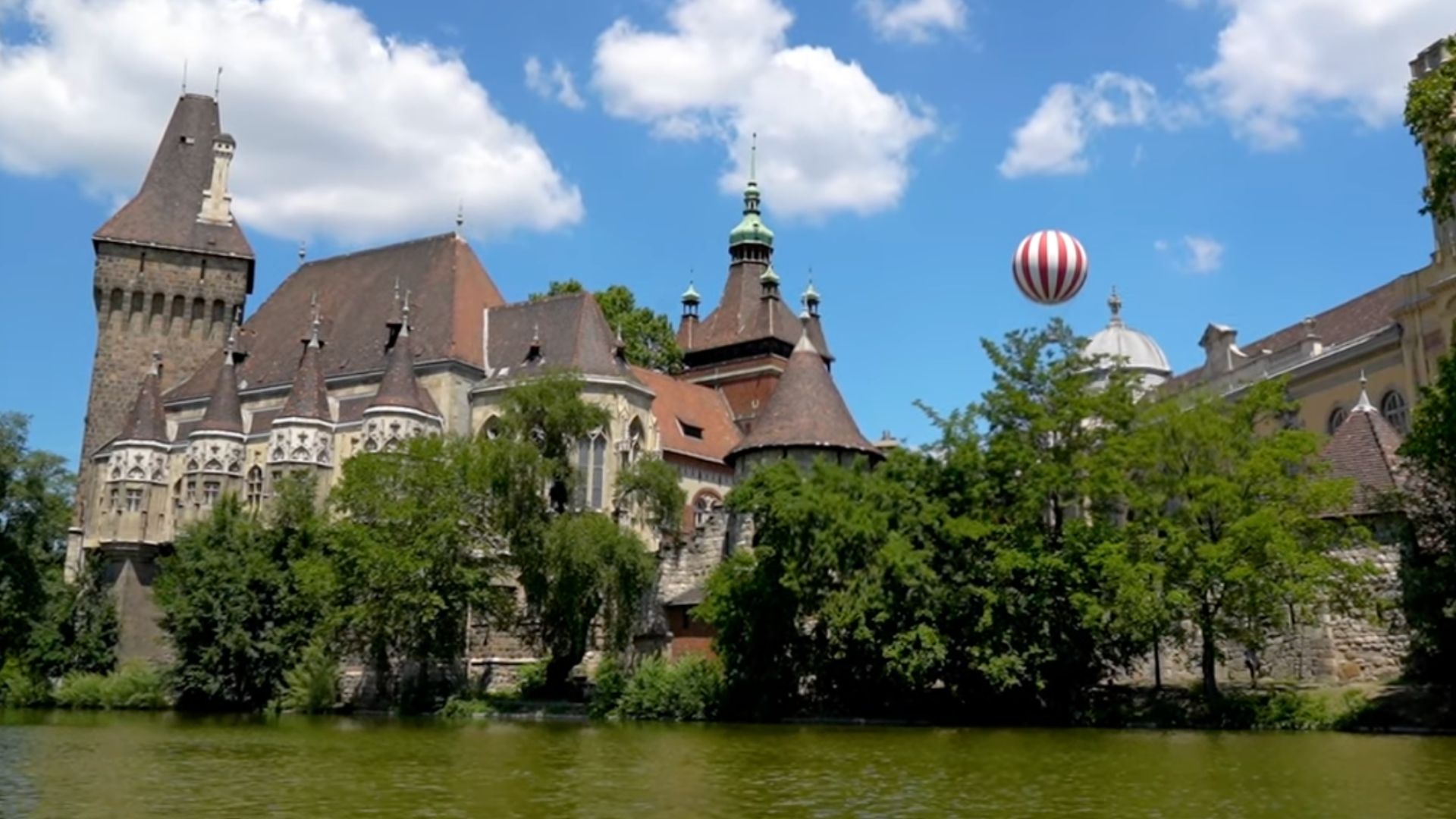Discover the grandeur of Budapest’s Heroes’ Square, where history, art, and culture converge in a spectacular open-air museum you simply can’t miss.

Highlights
- Marvel at the Millennium Monument, a grand tribute to the leaders of Hungary’s thousand-year history.
- Stroll around the colossal statues of the seven chieftains of the Magyars, the founders of Hungary.
- Immerse yourself in Hungarian art and history by visiting the Museum of Fine Arts and the Palace of Art, both flanking the square.
What to see and do
Heroes’ Square offers a wealth of cultural and historical experiences that you won’t want to miss.
Explore the Millennium Monument

Imagine standing in the heart of Heroes’ Square, gazing up at the magnificent Millennium Monument. This towering structure was built to commemorate the 1000th anniversary of the Hungarian conquest of the Carpathian Basin. It’s a piece of history frozen in stone and bronze, and it’s absolutely breathtaking.
The centerpiece of this monument is a 36-meter-high central column topped with a statue of the Archangel Gabriel. He holds the Hungarian Holy Crown and the apostolic double cross, symbolizing the divine approval of the Hungarian state. It’s quite a sight and makes for a perfect photo op!
As you move closer, you’ll notice the statues of the Seven Chieftains of the Magyars at the base of the column. These leaders, Árpád, Előd, Ond, Kond, Tas, Huba, and Töhötöm, are the founding figures of Hungary. Their fierce expressions and warrior stances tell tales of bravery and determination.
Don’t miss the other important national leaders depicted in the semicircular colonnade behind the central column. Each statue represents a key figure in Hungarian history, and their stories are just as compelling. For instance, you’ll find King Stephen I, the first King of Hungary, who played a crucial role in establishing the Christian state. Each statue isn’t just a piece of art; it’s a chapter of Hungary’s storied past.
Visit the Museum of Fine Arts

Right next to Heroes’ Square is the Museum of Fine Arts, a treasure trove of European art from the Middle Ages to the present day. Trust me, art lovers, this place is a must-visit.
The museum’s collection is vast and varied. You’ll find masterpieces by renowned artists like El Greco, Velázquez, and Goya. One of my personal favorites is Raphael’s “Esterházy Madonna.” The museum also hosts temporary exhibitions that cover a wide range of themes and artists. It’s always a good idea to check their website for the latest exhibits.
The museum itself is a work of art. Founded in 1906, it boasts a neoclassical architectural style that adds to the grandeur of the place. Walking through its halls, you can almost feel the weight of history and culture enveloping you.
Tour the Kunsthalle (Hall of Art)

Just across from the Museum of Fine Arts is the Kunsthalle, also known as the Hall of Art. If contemporary art is more your speed, you’re in for a treat.
The Kunsthalle focuses on contemporary art and features rotating exhibitions of both Hungarian and international artists. The diversity of media and styles on display is truly impressive. Whether it’s a provocative installation or a stunning piece of digital art, the Kunsthalle never fails to surprise and inspire.
The building itself is a Neo-Renaissance marvel. Its grand façade and intricate details are a feast for the eyes. Even if contemporary art isn’t your thing, the architectural beauty of the Kunsthalle alone is worth the visit.
Walk Around City Park (Városliget)

After soaking in all that art and history, take a leisurely stroll through City Park, or Városliget as the locals call it. This expansive green space is a haven of tranquility and fun.
City Park is home to some of Budapest’s most iconic attractions. You’ll find the fairy-tale-like Vajdahunyad Castle, which showcases architectural styles from various historical periods. Then there’s the Széchenyi Thermal Bath, one of the largest medicinal bath complexes in Europe. And don’t forget the Budapest Zoo, one of the oldest in the world.
There’s no shortage of things to do in City Park. Rent a boat and glide across the serene lake, or visit one of the many playgrounds if you’re traveling with kids. Having a picnic on a sunny day is always a good idea. And for those who prefer a bit more activity, bike rentals are available to explore the park at your own pace.
Admire the Architectural Details of Heroes’ Square

Last but certainly not least, take some time to admire the architectural details of Heroes’ Square itself.
The square is designed with semicircular colonnades flanking the Millennium Monument. These colonnades are adorned with statues of various historical figures, each one meticulously crafted. The intricate reliefs and symbolic elements incorporated into the square’s design are a testament to Hungary’s rich history and culture.
For a deeper understanding of these historical and cultural elements, consider taking a guided tour. You’ll gain insights that you might otherwise miss, making your visit even more enriching.
Each corner of Heroes’ Square is packed with stories waiting to be discovered. So take your time, soak it all in, and let the history of Hungary unfold before your eyes.
Directions
To reach Heroes’ Square in Budapest, the M1 (Yellow Line), also known as the Millennium Underground, is the most convenient option. From Deák Ferenc tér, board the M1 towards Mexikói út, or transfer from the M2 at Deák Ferenc tér if you’re starting from Keleti Pályaudvar.
Get off at Hősök tere station, right at Heroes’ Square. Alternatively, buses 20E, 30, 30A, 105, 178, and 230 stop nearby. From Deák Ferenc tér, take bus 105 towards Apor Vilmos tér, or from Nyugati Pályaudvar, take bus 105 or 30/30A to Hősök tere.
For a scenic journey, tram line 1 from Népliget stops at Olof Palme sétány, a short walk from the square. Bubi bike-sharing stations are also available, with dedicated bike lanes along Andrássy Avenue.
Walking from Deák Ferenc tér takes about 25-30 minutes along Andrássy Avenue, passing landmarks like the Hungarian State Opera House. Hop-on hop-off tourist buses also include Heroes’ Square on their routes, with tickets available online or at tourist centers.
Nearby Places
Széchenyi Thermal Bath: One of the largest and most famous spa complexes in Europe, Széchenyi Thermal Bath boasts stunning Neo-Baroque architecture and a history dating back to 1913. Visitors can indulge in various indoor and outdoor pools, thermal baths, saunas, and steam rooms.
Vajdahunyad Castle: Situated within City Park, Vajdahunyad Castle features an eclectic architectural style inspired by various historical Hungarian buildings. The castle also houses the Hungarian Agricultural Museum, the largest of its kind in Europe, and hosts seasonal events like Christmas markets and summer festivals.
Budapest Zoo & Botanical Garden: Founded in 1866, the Budapest Zoo is one of the oldest zoos in the world, offering attractions such as the Elephant House, Aquarium, and Palm House. The zoo also features a botanical garden with diverse plant species and themed gardens, alongside educational programs and interactive exhibits for families.
Andrássy Avenue: A UNESCO World Heritage Site, Andrássy Avenue is renowned for its architectural beauty and cultural significance. Key landmarks include the Hungarian State Opera House, the House of Terror Museum, and a variety of high-end shops and cafes.
Museum of Fine Arts: Located at Heroes’ Square, the Museum of Fine Arts houses an extensive collection of European art from various periods. The building itself is architecturally significant, and the museum regularly hosts special exhibitions that are worth checking out.
City Park (Városliget): A vast green space in Budapest, City Park offers playgrounds, recreational areas, and attractions like the City Park Ice Rink and the Transport Museum. It’s an ideal spot for leisurely activities such as boating, picnicking, or simply enjoying a stroll amidst natural scenery.
Did you know that: (4 Interesting Facts!)
- Heroes’ Square is home to the Millennium Monument, which was constructed to commemorate the 1000th anniversary of Hungary’s conquest of the Carpathian Basin.
- The central statue of the Millennium Monument features Archangel Gabriel holding the Hungarian Holy Crown and the apostolic double cross, symbolizing the nation’s Christian heritage.
- The square is flanked by two elegant buildings: the Museum of Fine Arts on the left and the Hall of Art (Műcsarnok) on the right, both of which are architectural masterpieces.
- The statues of the Seven Chieftains of the Magyars, who led the Hungarian tribes to the Carpathian Basin, stand proudly at the base of the Millennium Monument, each chieftain depicted with unique details reflecting their distinct personalities.
History
An Over 100-Year Timeline of Heroes’ Square in Budapest:
- 1896: The construction of Heroes’ Square, also known as Hősök Tere, begins under the authority of Miklós Ybl, a prominent Hungarian architect, to commemorate the thousand-year anniversary of the Hungarian conquest of the Carpathian Basin.
- 1900: The square is officially opened to the public, showcasing statues of the founding fathers of Hungary and other major national leaders.
- 1929: The iconic Millennium Monument, which dominates the square, is finally completed. Its central feature is a column topped by a statue of the archangel Gabriel, who is said to have offered St. Stephen, the first king of Hungary, a crown.
- 1945: After World War II, the statues of the Habsburg kings are removed and replaced with new ones depicting national heroes to reflect the change in the political climate.
- 1956: Heroes’ Square becomes a significant site during the Hungarian Revolution, with massive demonstrations taking place here against Soviet rule.
- 1989: The square serves as the symbolic burial place of Imre Nagy, a significant figure in Hungarian history and the Prime Minister during the 1956 revolution, further cementing its significance in the nation’s political and social landscape.
- 2002: Heroes’ Square, along with the adjacent City Park, the Széchenyi Thermal Bath, and the Vajdahunyad Castle, is declared a World Heritage Site by UNESCO.
- 2013: The Museum of Fine Arts and the Hall of Art, both located on Heroes’ Square, undergo significant renovations, further enhancing the square’s cultural significance.
- Present Day: Heroes’ Square is one of Budapest’s most visited tourist attractions, drawing countless visitors each year to its impressive monuments and surrounding cultural establishments. It continues to be a focal point for national celebrations, public concerts, and events.
FAQ
What is the significance of Heroes’ Square?
Heroes’ Square, known as Hősök tere in Hungarian, is one of Budapest’s most iconic landmarks. It commemorates the leaders of the seven tribes that founded Hungary and other important national figures. The square is a symbol of Hungarian history and patriotism, making it a must-visit for anyone interested in the nation’s heritage.
How old is Heroes’ Square?
Heroes’ Square was completed in 1900, making it over 120 years old. The Millennium Monument at its center was constructed to celebrate the 1,000th anniversary of the Magyar conquest of the Carpathian Basin in 895.
What can I see at Heroes’ Square?
The square features the Millennium Monument, which includes statues of the seven chieftains who led the Hungarian tribes, as well as statues of other important historical figures. The Museum of Fine Arts and the Hall of Art (Műcsarnok) are also located here, offering rich cultural experiences.
Why is the Millennium Monument important?
The Millennium Monument stands as a tribute to Hungary’s thousand-year history. At its base, you’ll find statues of the seven Magyar chieftains, while the colonnades feature statues of kings, governors, and other key figures in Hungarian history. The central column is topped with a statue of Archangel Gabriel holding the Hungarian Holy Crown and apostolic double cross.
Is Heroes’ Square a UNESCO World Heritage Site?
Yes, Heroes’ Square is part of the “Budapest, including the Banks of the Danube, the Buda Castle Quarter, and Andrássy Avenue” UNESCO World Heritage Site. This designation highlights its cultural and historical significance.
Map & Address
Heroes’ Square, 1146 Budapest, Hősök tere, Hungary
